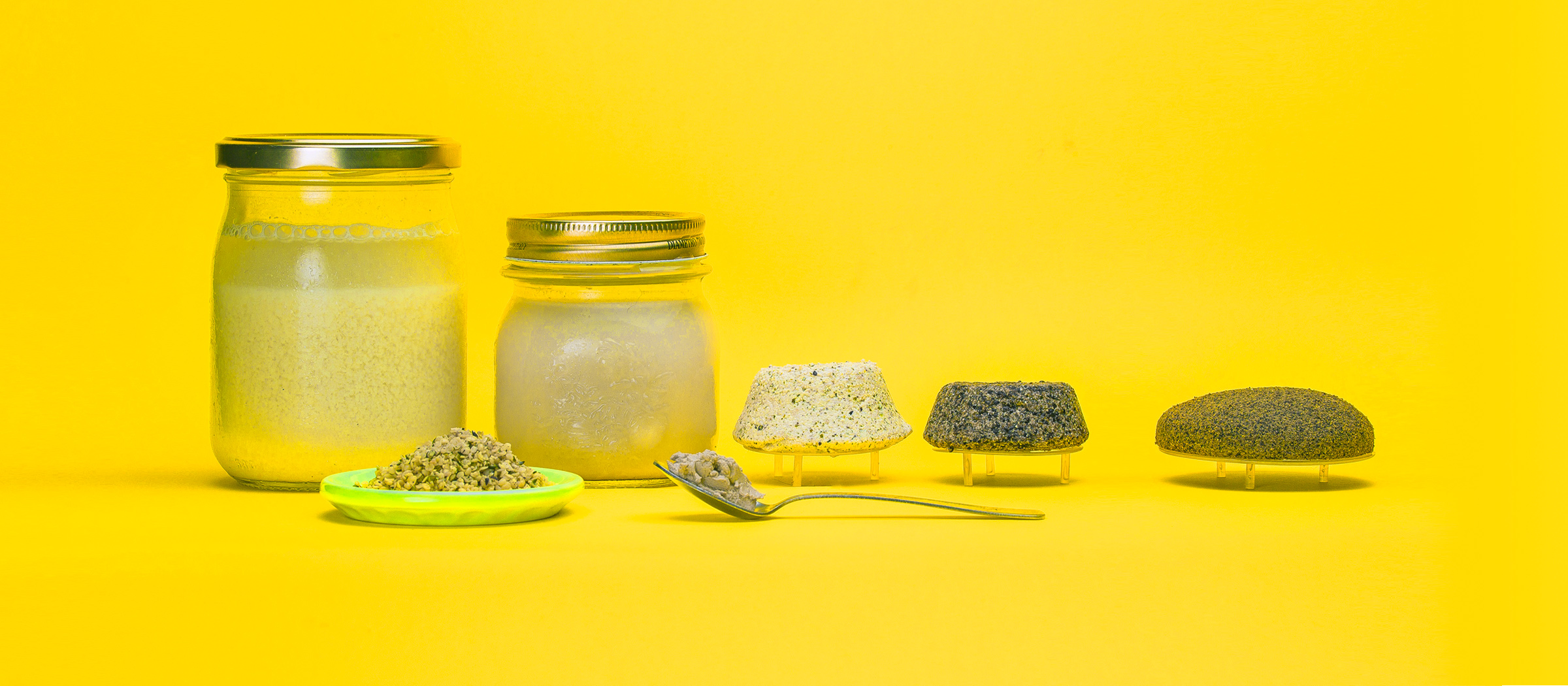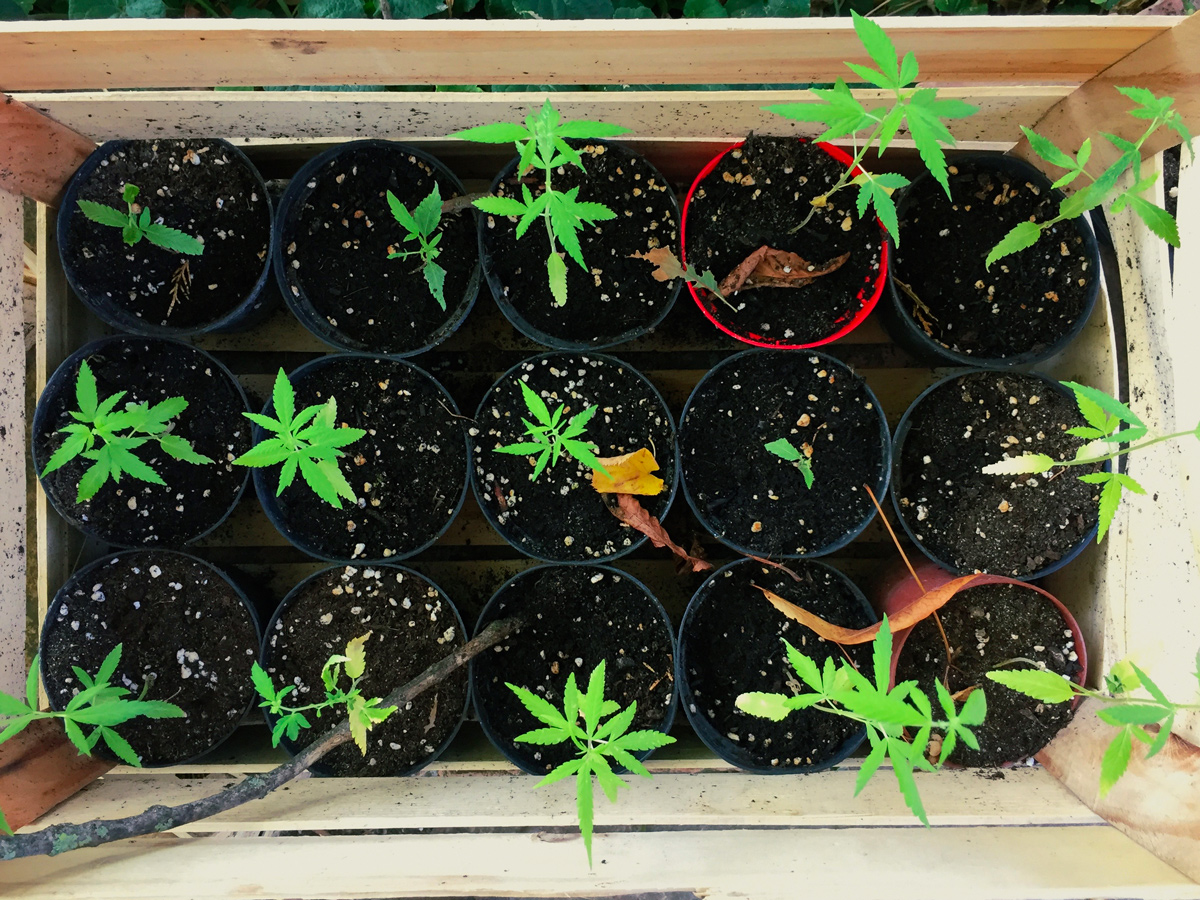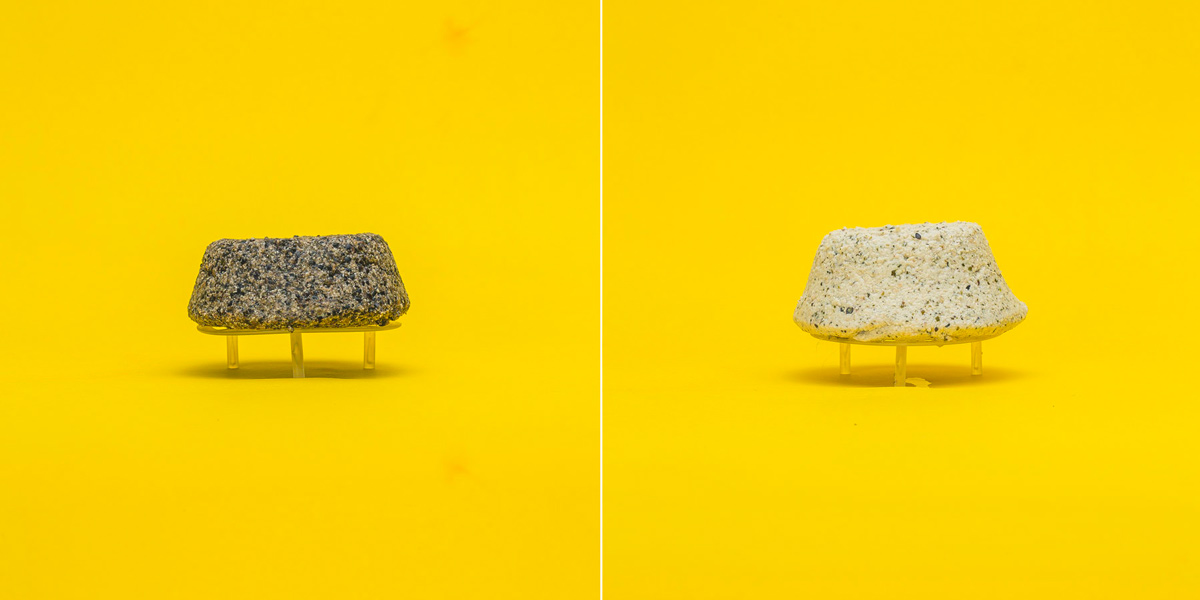The New Gastronome
Cannabis Trip
History, Chemistry and Recipes
by Matilde Garzotti
by Matilde Garzotti

When I told my grandmother that I was going to do my research project about Cannabis, she started praying, convinced I would become an addict. Things got even worse when I tried to explain to her that my idea was simply to investigate the possibilities of Cannabis cultivation in rural development. She asked me if my goal in life, after all these years of studies, was to get high in all the developing countries!
At the time, I didn’t realize that my grandmother’s stigma would have pestered me, not just during my travel, but also afterwards. I can still see dismayed expressions arising in the faces of people when they heard me talking about “eating Cannabis seeds” and “spreading its cultivation sensitising people”. The same faces though, my grandmother being one of them, become more relaxed and trusting as soon as I told them the story I am now going to share with you now.
The beginning of the human-cannabis relationship dates back 10,000 years ago, when humans were still hunter-gatherers and it seems to have played a crucial role in the transition to incipient agriculture. It is still not clear if the Cannabis plant,[1] already widespread, encouraged the formation of the first settlements, or if the first nomadic settlements favoured the diffusion of the plant. Since the Neolithic Revolution, the plant provided us with a variety of resources in abundance and easily cultivated plants. Indeed, the seeds were a nutritious source of food. Leaves were used as fodder and for manure. The stalks, after soaking, gave strong fibre that were used for the realisation of ropes, textiles and materials that dressed the earliest human communities. The ingestion and smoking of its inflorescences have been part of our history as social costume, religious rituals, and mostly, as medicine.

According to Herodotus (484 B. C. ), the Scythians brought Cannabis to Europe, where around 500 A. C., it was already known as the fibre of excellence for rope production. In 1000 A. C., it was described as the “queen of fibre plants, the standard by which to measure all the other fibres”. Resistant to salt-water wear, Cannabis had the greatest commercial impulse in the year 1400, thanks to the Maritime Republics that started using its fibre for making ropes and sails. This impulse persisted for the centuries of the great marine conquests and Italy began to stand out for the quality of its fibre, especially in the area of Bologna and Ferrara.
“For thousands of years, the stalks and the Cannabis seeds have been used as food for humans and livestock.”
In XVI century, Henry VIII encouraged Italian farmers to grow Cannabis in order to furnish the British fleet, so Italy became the second world producer and the first supplier of the British Navy. In 1873, Luigi Bodio in his book “Appunti di Geografia Agricola Italiana. Produzione del Lino e della Canapa” made a geographical excursus of the area suited to Cannabis cultivation in Italy: in Piedmont, it was cultivated for domestic use in home-gardens; in Lombardy, every farmer used to plant Cannabis to be mixed with the linen fibre; Venezia and Treviso were described as not suitable for Cannabis cultivation while Mantova, Verona, Rovigo and Padova were described as the “classic places” to grow Cannabis; Emilia-Romagna, Liguria, Toscana, Umbria, Aquila, Napoli, Salerno, Calabria and Sicilia were where the plant was always grown in the same place (‘canapina’), nearby water courses.

In 1930, Cannabis emerged as a precious and abundant source of raw material for several industrial sectors and, in 1940, Italy was still the second world producer after the Soviet Union. From the beginning of the 50s, the cultivation started declining due to different factors like: the refusal of the laborious maceration techniques, the increase of the work costs, the lack of investment in technological innovation, the growing development of the synthetic fibres industry and some little problems with the law.[2]
“The nutritional value of the Cannabis seed, indeed, is extraordinary.”
For thousands of years, the stalks and the Cannabis seeds have been used as food for humans and livestock. Butrica (2006) reports the first literary evidence of consumption of Cannabis seeds in the Mediterranean: in the IV century B. C., during events, ancient Greeks used to eat kannabides, a toffee made of honey and Cannabis seeds. In 2012, the Università dei Sapori di Perugia with the Museum of Cannabis, in Sant’anatolia di Narco (PG), started the research of use of Cannabis in the Italian historical cookbooks. From XVI century on, its use has been recorded in different sources: the ‘Registrum Coquine’ written by Johannes Bockenheim; the ‘De Honesta Voluptate et Valetudine’ of Bartolomeo Sacchi; and the ‘Libro of Arte Coquinaria’ by Maestro Martino, just to name a few, highlighted the widespread culinary use of Cannabis seeds, that were, unfortunately, lost with time.
A. D V. E. R. T. I. S. I. N. G
The nutritional value of the Cannabis seed, indeed, is extraordinary. It’s high in proteins and has a unique composition: 65% of edestins that, combined with the albumins, makes all the eight essential amino-acids present immediately available. It’s a source of oligominerals (including phosphorus, potassium, magnesium, sodium, calcium, iron and sulphur) and vitamins (A, B1, B2, B3, B5, D, E). It has a high content of essential fatty acids, Omega-3 and Omega-6, in the right proportion (1:3). One hundred grams of Cannabis seeds (459 Kcal) contain 31 grams of fats, 24 grams of fibres and 23 grams of proteins, supplying the 82%, 72% and 49% of B1, B2, and potassium respectively.
“Cannabis leaves and inflorescences also play a role in gastronomy.”
Cannabis seeds can be eaten raw, cooked or they can be processed into flour, oil and other byproducts, like vegan-milk, tofu, energy bars easily doable at home. Cannabis flour is derived by milling the seeds or seed-mass, a byproduct of oil production. It’s an oily and dark flour with a nutty aftertaste and it’s generally used as a mixed flour, rarely pure, because it’s gluten-free and is difficult to knead like other flours. So, the content of the cannabis flour, usually added to any dough, is between the 10 and 40%.
The flour contains 50% carbohydrates and 27% proteins. Of all the amino-acids contained in the flour (like methionine, cysteine, lecithin and arginine), there’s no gliadin and glutenin, thus it’s gluten-free. Cannabis oil is derived by the cold-pressing of seeds. It contains 18% alpha-linolenic acid and it has a considerable quantity of vitamins, salts and EFAs (one spoon per day covers the daily requirement of Omega-3 for an adult).
It’s rich in phytosterols and cannabidiol (CBD) that have antioxidant properties as well as several therapeutic applications, including osteoarticular and muscular systems disorders, autoimmune diseases, cardiovascular disorders, metabolism problems, respiratory disease, skin infections and gastrointestinal tract diseases. Cannabis leaves and inflorescences also play a role in gastronomy. While the leaves can be used in tea and tisanes, or fried, the inflorescences can be used for infusing butter or wine, in doughs, in alcohols or brewed in beers.
Today, after years of forgetfulness, Cannabis cultivation has come back to Italian crops. Just to give you an idea, in 2013, there were only 150 holdings and 400 hectares cultivated; that became 350 holdings and 1,290 hectares in 2014, and it doubled at the beginning of 2016. Today, the hectares cultivated in Italy are more than 4,000. That’s a growth of more than 100% over the last five years, and the numbers are still growing!
“Indeed, the plant offers them a very versatile product that has the possibilities to become again a local and an Italian excellence.”
Last summer, I was lucky enough to visit and work in different agricultural realities in Southern Italy (Società Agricola Antichi Grani, Società Cooperativa Agricola Lentamente, Fattoria Seminole, Le Terre del Tirino, La Serenissima) in which Cannabis, together with other crops, were cultivated for different purposes. Unluckily, even today, technological investments in the sector and a clear law are lacking. This, in addition to people’s misconceptions about the plant, put Cannabis in a grey area that’s difficult to get out of and that slows its growth potential.
But thanks to its cultivation, the farmers I visited are able to join men, their organisation mode and contextual knowledge, with environment, both natural and social, and agricultural productions of identity and quality. Indeed, the plant offers them a very versatile product that has the possibilities to become again a local and an Italian excellence. From Cannabis cultivation emerges an agricultural model that is territory and community centered and that, through retro-innovation, promotes livelihood differentiation, food security and sovereignty. That’s why it would be worth it to start looking at this stupefacient plant with different eyes!
Usually at this point, I start seeing relaxed faces in my interlocutors and I know I have kind of convinced them about the goodness of Cannabis. Sadly I cannot see the expression on your faces right now…but, if I have not still convinced you, I invite you to try (and enjoy) these simple and tasty recipes!
Cannabis Milk
 Left: Hemp milk made with hulled seeds. • Right: Hemp milk made with whole seeds seeds.
Left: Hemp milk made with hulled seeds. • Right: Hemp milk made with whole seeds seeds.
Soak the seeds overnight in the first 200 ml of water and a pinch of salt.
Blend the soaked seeds and let rest for 30 minutes. Then, add the other 300 ml of water, a teaspoon of honey or sugar, the seasoning, and blend it again. Pay attention to the speed and the time of your blender, too high and too much could cook your ‘milk’. If it’s not as smooth as you want, just wait 30 minutes and blend it again!
Drain the liquid with a canvas (remember to keep the paste), and enjoy your Cannabis Milk as any other vegetal-milk…solo, with coffee, or in desserts.
Cannabis Tofu
 Left: I named this tofu: “hem-fù”. • Right: Cannabis tofu made with hulled seeds.
Left: I named this tofu: “hem-fù”. • Right: Cannabis tofu made with hulled seeds.
Soak the seeds with a pinch of salt and a mini-pinch of sugar for at least 2 hours.
Blend the soaked seeds a couple of times, letting them rest from time to time. Put everything in a pot at the lowest fire adding the seasoning that you like. Around 85°C, your blended seeds will start curdling spontaneously.
Before the boiling point, take it away from the fire and stir it gently. Drain the whey with a strainer; press and shape the paste as you prefer. Let it rest in the fridge for a few hours and enjoy your Cannabis-Tofu as any other tofu…fried is delicious!

Test of tofu made from the previous tofu milk. It coagulates at 85ºC.
References
1. The taxonomy of Cannabis plant is still controversial. There are two lines of thought. The first considers Cannabis as one species very variable with three subspecies, sativa spp. Ruderalis, sativa spp. Indica and sativa spp. Sativa; each of them with different characteristics in relation to their distribution and soil and climate conditions. The second, instead, considers Cannabis comprehensive of three different species: sativa l., indica (Lam) and ruderalis Janisch.
Today, the main distinction is made on the levels of the secondary metabolites of the Cannabis plant: high levels of THC (psychoactive) are called Cannabis or Marijuana; high levels of CBD are called Legal Cannabis, or more commonly, Hemp. By the decree law of 2 December 2016, in Italy, the cultivation of those varieties that have a content of THC (psychoactive) minor of the 0.6% are considered legal, while the levels of CBD have no limits (if not those imposed by the physiology of the plant). This paper is focussed on those aforementioned varieties. For this reason, and because I strongly believe in the need of redemption of the name of the plant, I will refer to it simply as Cannabis.
2. In 1937, in USA, ‘The Marijuana Tax Act’ initiated prohibition against trade, use and cultivation of Cannabis (both Marijuana and Hemp because no distinction was made), which extended, in a few years, to many other countries in the world. Italy was also influenced by the misconception and law overseas, heavily diminishing Cannabis cultivation. In the early 90s the application of art.26 of the law decree 309/90 (still ongoing) stated the definitive fall of Cannabis in Italy.
The places I visited last summer:
La Seranissima di Elisa Laurora & Co.
Società Cooperativa Agricola Lentamente
Azienda Agricola Le Terre del Tirino
Source Materials:
– Cannabis, Evolution and Ethnobotany. UC Press, by Clarke and Merlin
– Canapa Revolution. Altraeconomia, 2018, by Chiara Spadaro
– Appunti di Geografia Agricola Italiana: Produzione del Lino e della Canapa, Estratto dall’Economista d’Italia,1873 by Luigi Bodio
– La Canapa: Cultura, Lavorazione e Commercio, L. Cappelli editore, Rocca S. Casciano, 1923, by U. Somma